A Study on Measures to Preserve Chlorine and Ammonia Oxygen Removal
Abstract
:1. Introduction
2. Materials and Methods
2.1. Preparation of Experimental Materials and Calculations
2.2. Experimental Equipment and Material Characterization
3. Results and Discussion
3.1. Effect of Graphite Anode and Addition of Sulphate Anion Barrier on Electrolysis
3.2. Manganese Anodes and Their Effect on Electrolysis
3.2.1. Manganese Anode Characterization
3.2.2. Manganese Anode Gas Characterization
3.2.3. Effect of Manganese Anodes on Zinc Cathodes
4. Investigation on the Mechanism of Chlorine Inhibition by Graphite and Manganese Anode
5. Conclusions
Author Contributions
Funding
Institutional Review Board Statement
Informed Consent Statement
Data Availability Statement
Conflicts of Interest
References
- Díaz-Arista, P.; Meas, Y.; Ortega, R.; Trejo, G. Electrochemical and AFM study of Zn electrodeposition in the presence of benzylideneacetone in a chloride-based acidic bath. J. Appl. Electrochem. 2005, 35, 217–227. [Google Scholar] [CrossRef]
- Gu, W.; Liu, C.; Tang, J.; Liu, R.; Yang, H.; Hu, J. Improving zinc electrodeposition in ammoniacal electrolytes with the saturated dissolved methyltrioctylammonium chloride. Hydrometallurgy 2018, 175, 43–51. [Google Scholar] [CrossRef]
- Dresp, S.; Dionigi, F.; Klingenhof, M.; Strasser, P. Direct Electrolytic Splitting of Seawater: Opportunities and Challenges. ACS Energy Lett. 2019, 4, 933–942. [Google Scholar] [CrossRef]
- Lu, Y.; Zhang, H.; Ang, E.H.; Nie, Z.; Liu, H.; Du, Y.; Han, C.; Zhu, J.; Huang, W. In-situ self-catalyzed growth of bimetallic nanoparticles/carbon nanotubes: A flexible binder-free electrocatalyst for high-performance oxygen evolution reaction. Mater. Today Phys. 2021, 16, 100303. [Google Scholar] [CrossRef]
- Zhang, Q.; Yu, G.; Hong, R.; Qiu, W.; Deng, C.; Yu, C. Electrochemical chlorine evolution reaction to improve the desalination of sea sand. Sci. Total Environ. 2024, 945, 174063. [Google Scholar] [CrossRef]
- Exner, K.S.; Lim, T.; Joo, S.H. Circumventing the OCl versus OOH scaling relation in the chlorine evolution reaction: Beyond dimensionally sTab. anodes. Curr. Opin. Electrochem. 2022, 34, 100979. [Google Scholar] [CrossRef]
- Chang, J.; Wang, G.; Yang, Z.; Li, B.; Wang, Q.; Kuliiev, R.; Orlovskaya, N.; Gu, M.; Du, Y.; Wang, G.; et al. Dual-Doping and Synergism toward High-Performance Seawater Electrolysis. Adv. Mater. 2021, 33, 2101425. [Google Scholar] [CrossRef]
- Rasmus, K.B.; Ann, C. Selectivity between Oxygen and Chlorine Evolution in the Chlor-Alkali and Chlorate Processes. Chem. Rev. 2016, 116, 2982–3028. [Google Scholar]
- Jia, L.; Zhong, Y.; Li, K.; Li, B.; Gao, J.; Liu, T.; Wang, F.; Wu, W.; Feng, J. Recovery of zinc resources from secondary zinc oxide via composite ammonia leaching: Analysis of Zn leaching behavior. Chem. Eng. J. 2023, 472, 144930. [Google Scholar] [CrossRef]
- Ling, T.; Yan, D.Y.; Wang, H.; Jiao, Y.; Hu, Z.; Zheng, Y.; Zheng, L.; Mao, J.; Liu, H.; Du, X.W.; et al. Activating cobalt(II) oxide nanorods for efficient electrocatalysis by strain engineering. Nat. Commun. 2017, 8, 1509. [Google Scholar] [CrossRef]
- Guo, J.; Zheng, Y.; Hu, Z.; Zheng, C.; Mao, J.; Du, K.; Jaroniec, M.; Qiao, S.Z.; Ling, T. Direct seawater electrolysis by adjusting the local reaction environment of a catalyst. Nat. Energy 2023, 8, 264–272. [Google Scholar] [CrossRef]
- Tong, W.; Forster, M.; Dionigi, F.; Dresp, S.; Sadeghi Erami, R.; Strasser, P.; Cowan, A.J.; Farràs, P. Electrolysis of low-grade and saline surface water. Nat. Energy 2020, 5, 367–377. [Google Scholar] [CrossRef]
- Bennett, J.E. Electrodes for generation of hydrogen and oxygen from seawater. Int. J. Hydrogen Energy 1980, 5, 401–408. [Google Scholar] [CrossRef]
- Vos, J.G.; Wezendonk, T.A.; Jeremiasse, A.W.; Koper, M.T. MnOx/IrOx as Selective Oxygen Evolution Electrocatalyst in Acidic Chloride Solution. J. Am. Chem. Soc. 2018, 140, 10270–10281. [Google Scholar] [CrossRef]
- Fujimura, K.; Izumiya, K.; Kawashima, A.; Akiyama, E.; Habazaki, H.; Kumagai, N.; Hashimoto, K. Anodically deposited manganese-molybdenum oxide anodes with high selectivity for evolving oxygen in electrolysis of seawater. J. Appl. Electrochem. 1999, 29, 769–775. [Google Scholar] [CrossRef]
- Freire, N.H.J.; Majuste, D.; Angora, M.A.; Ciminelli, V.S.T. The effect of organic impurities and additive on nickel electrowinning and product quality. Hydrometallurgy 2017, 169, 112–123. [Google Scholar] [CrossRef]
- Padhy, S.K.; Patnaik, P.; Tripathy, B.C.; Ghosh, M.K.; Bhattacharya, I.N. Electrodeposition of manganese metal from sulphate solutions in the presence of sodium octyl sulphate. Hydrometallurgy 2016, 165, 73–80. [Google Scholar] [CrossRef]
- Rabah, M.A.; Abdul Azim, A.A.; Ismail, A. Wear of graphite anodes during electrolysis of add sulphate solutions. J. Appl. Electrochem. 1981, 11, 41–47. [Google Scholar] [CrossRef]
- Hine, F.; Yasuda, M.; Sugiura, I.; Noda, T. Effects of the Active Chlorine and the pH on Consumption of Graphite Anode in Chlor-Alkali Cells. J. Electrochem. Soc. 1974, 121, 220. [Google Scholar] [CrossRef]
- Wranglén, G.; Sjödin, B.; Wallén, B. A new test method for graphite anodes in alkali chloride electrolysis. Electrochim. Acta 1962, 7, 577–587. [Google Scholar] [CrossRef]
- Tian, H.; Zeng, L.; Huang, Y.; Ma, Z.; Meng, G.; Peng, L.; Chen, C.; Cui, X.; Shi, J. In Situ Electrochemical Mn(III)/Mn(IV) Generation of Mn(II)O Electrocatalysts for High-Performance Oxygen Reduction. Nano-Micro Lett. 2020, 12, 161. [Google Scholar] [CrossRef] [PubMed]
- Chen, K.; Wang, M.; Li, G.; He, Q.; Liu, J.; Li, F. Spherical α-MnO2 Supported on N-KB as Efficient Electrocatalyst for Oxygen Reduction in Al-Air Battery. Materials 2018, 11, 601. [Google Scholar] [CrossRef] [PubMed]
- George, L.; Viji, C.; Maheen, M.; Mohammed, E.M. Enhanced magnetic properties at low temperature of Mn substituted Ni-Zn mixed ferrite doped with Gd ions for magnetoresistive applications. Mater. Res. Bull. 2020, 126, 110833. [Google Scholar] [CrossRef]
- Li, M.; Zeng, L.; Chen, Y.; Zhuang, L.; Wang, X.; Shen, H. Realization of Colored Multicrystalline Silicon Solar Cells with SiO2/SiNx:H Double Layer Antireflection Coatings. Int. J. Photoenergy 2013, 2013, 352473. [Google Scholar] [CrossRef]
- Abe, H.; Murakami, A.; Tsunekawa, S.; Okada, T.; Wakabayashi, T.; Yoshida, M.; Nakayama, M. Selective Catalyst for Oxygen Evolution in Neutral Brine Electrolysis: An Oxygen-Deficient Manganese Oxide Film. ACS Catal. 2021, 11, 6390–6397. [Google Scholar] [CrossRef]
- Kim, J.; Yin, X.; Tsao, K.C.; Fang, S.; Yang, H. Ca2Mn2O5 as Oxygen-Deficient Perovskite Electrocatalyst for Oxygen Evolution Reaction. J. Am. Chem. Soc. 2014, 136, 14646–14649. [Google Scholar] [CrossRef]
- Genuino, H.C.; Meng, Y.; Horvath, D.T.; Kuo, C.H.; Seraji, M.S.; Morey, A.M.; Joesten, R.L.; Suib, S.L. Enhancement of Catalytic Activities of Octahedral Molecular Sieve Manganese Oxide for Total and Preferential CO Oxidation through Vanadium Ion Framework Substitution. ChemCatChem 2013, 5, 2306–2317. [Google Scholar] [CrossRef]
- Martin, R.; Kim, M.; Lee, C.J.; Mehar, V.; Albertin, S.; Hejral, U.; Merte, L.R.; Lundgren, E.; Asthagiri, A.; Weaver, J.F. High-Resolution X-ray Photoelectron Spectroscopy of an IrO2(110) Film on Ir(100). J. Phys. Chem. Lett. 2020, 11, 7184–7189. [Google Scholar] [CrossRef]
- Biesinger, M.C.; Payne, B.P.; Grosvenor, A.P.; Lau, L.W.; Gerson, A.R.; Smart, R.S.C. Resolving surface chemical states in XPS analysis of first row transition metals, oxides and hydroxides: Cr, Mn, Fe, Co and Ni. Appl. Surf. Sci. 2011, 257, 2717–2730. [Google Scholar] [CrossRef]
- Kaur, A.; Chahal, P.; Hogan, T. Selective Fabrication of SiC/Si Diodes by Excimer Laser Under Ambient Conditions. IEEE Electron Device Lett. 2016, 37, 142–145. [Google Scholar] [CrossRef]
- Foo, C.; Li, Y.; Lebedev, K.; Chen, T.; Day, S.; Tang, C.; Tsang, S.C.E. Characterization of oxygen defects and nitrogen impurities in TiO2 photocatalysts using variable-temperature X-ray powder diffraction. Nat. Commun. 2021, 12, 661. [Google Scholar] [CrossRef]
- Ignatans, R.; Mallia, G.; Ahmad, E.A.; Spillane, L.; Stoerzinger, K.A.; Shao-Horn, Y.; Harrison, N.M.; Tileli, V. The Effect of Surface Reconstruction on the Oxygen Reduction Reaction Properties of LaMnO3. J. Phys. Chem. C 2019, 123, 11621–11627. [Google Scholar] [CrossRef]
- Risch, M.; Stoerzinger, K.A.; Han, B.; Regier, T.Z.; Peak, D.; Sayed, S.Y.; Wei, C.; Xu, Z.; Shao-Horn, Y. Redox Processes of Manganese Oxide in Catalyzing Oxygen Evolution and Reduction: An in Situ Soft X-ray Absorption Spectroscopy Study. J. Phys. Chem. C 2017, 121, 17682–17692. [Google Scholar] [CrossRef]
- Lima, F.H.B.; Calegaro, M.L.; Ticianelli, E.A. Electrocatalytic activity of manganese oxides prepared by thermal decomposition for oxygen reduction. Electrochim. Acta 2007, 52, 3732–3738. [Google Scholar] [CrossRef]
- Dionigi, F.; Reier, T.; Pawolek, Z.; Gliech, M.; Strasser, P. Design Criteria, Operating Conditions, and Nickel-Iron Hydroxide Catalyst Materials for Selective Seawater Electrolysis. ChemSusChem 2016, 9, 962–972. [Google Scholar] [CrossRef]


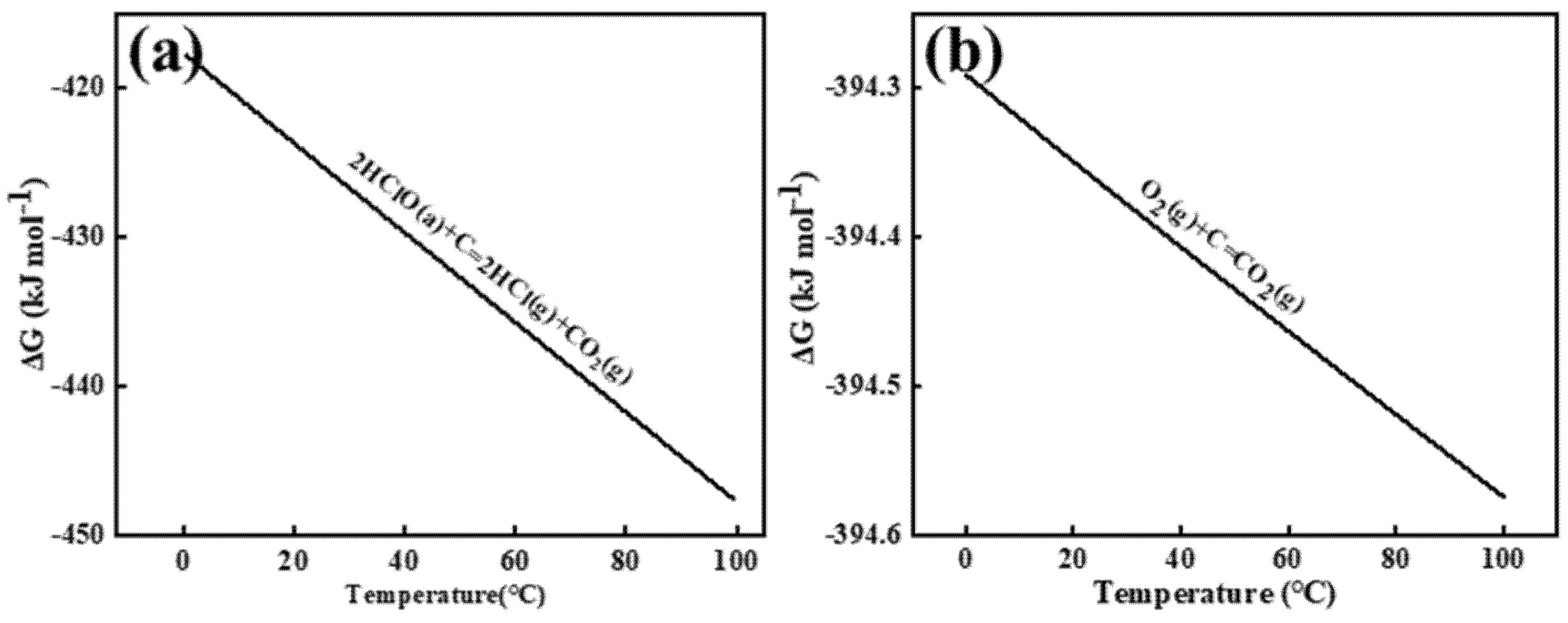
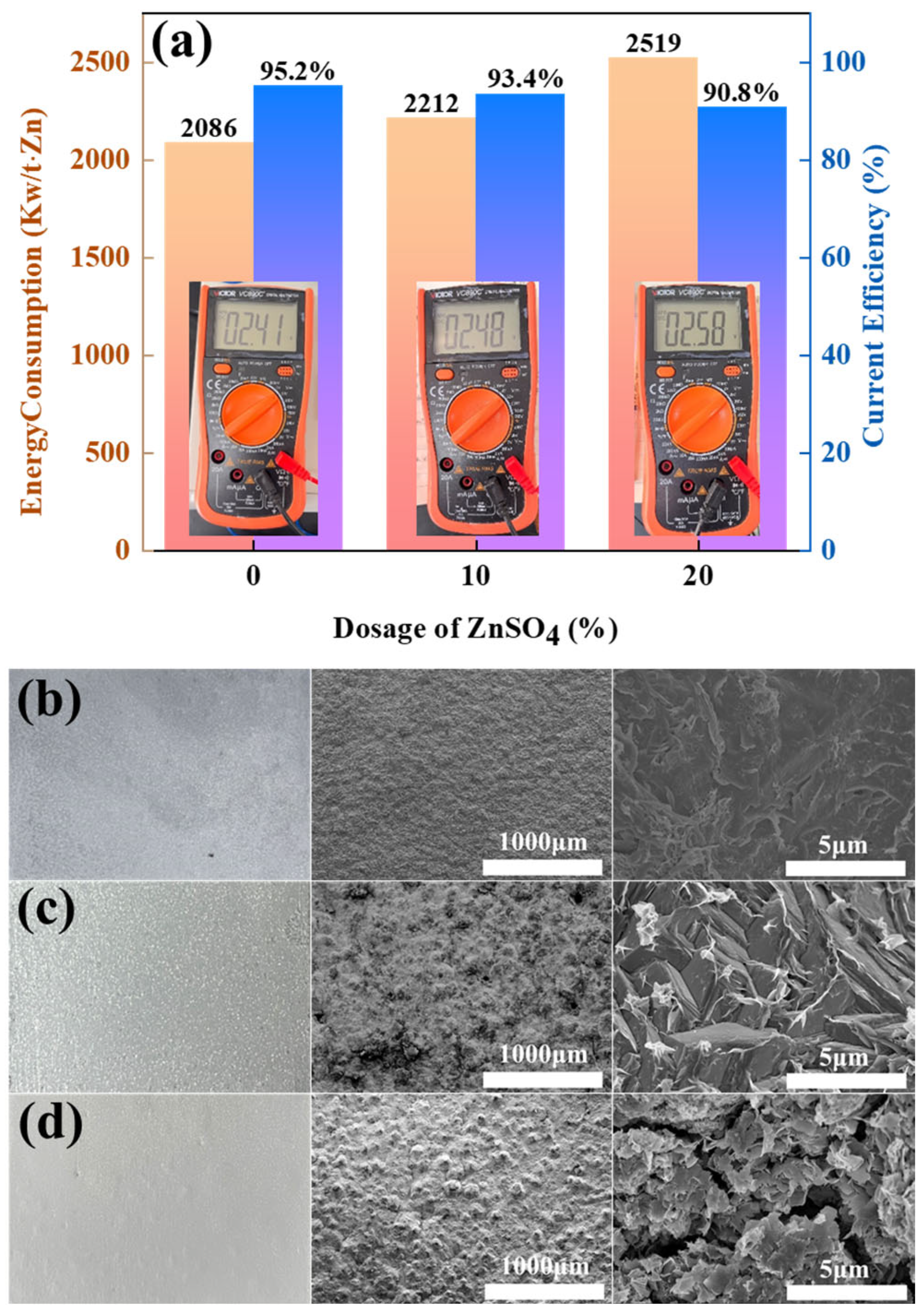



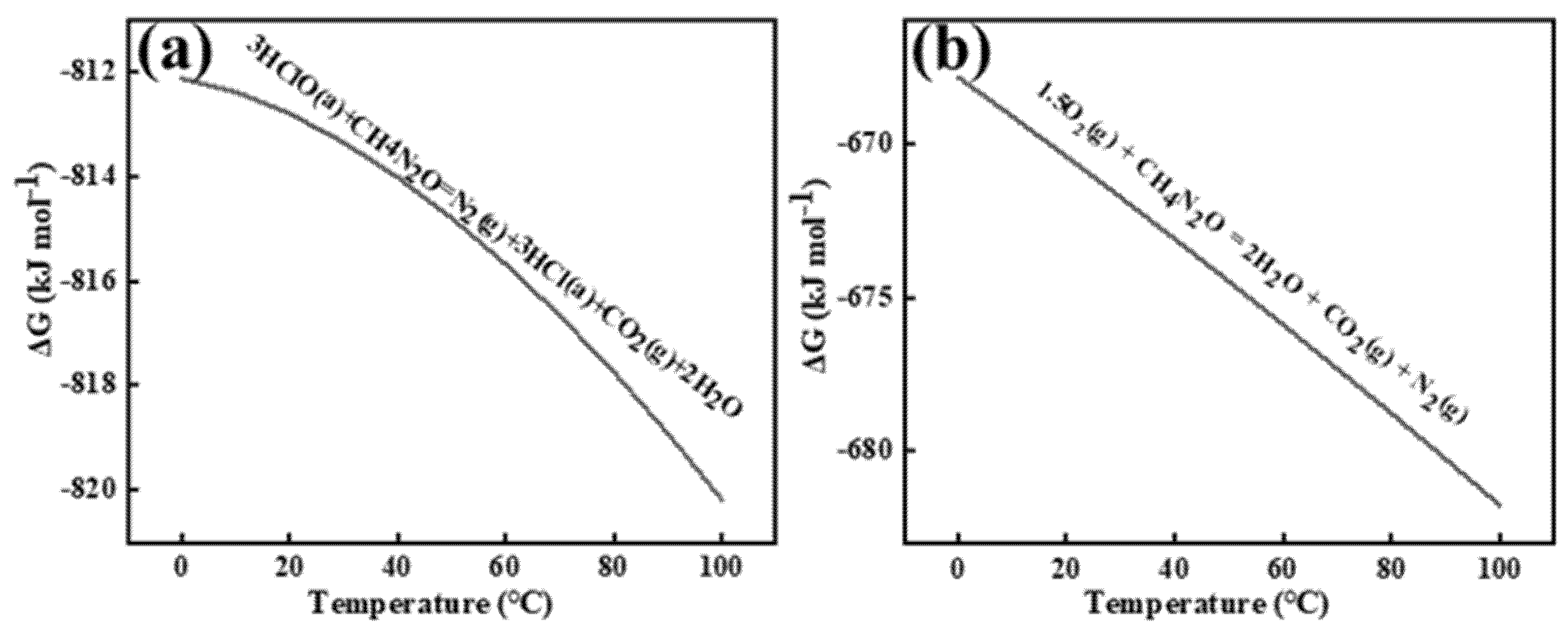
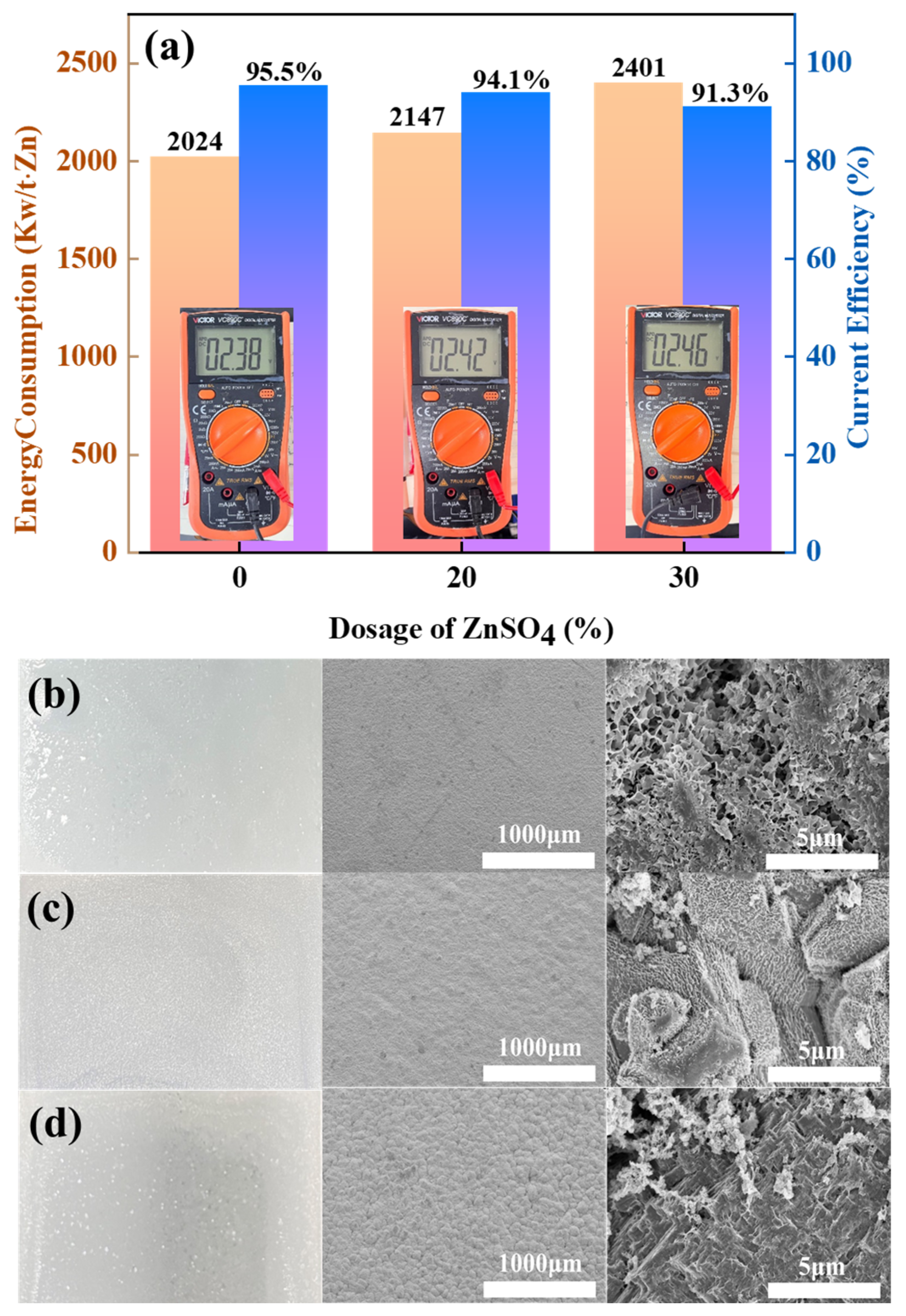
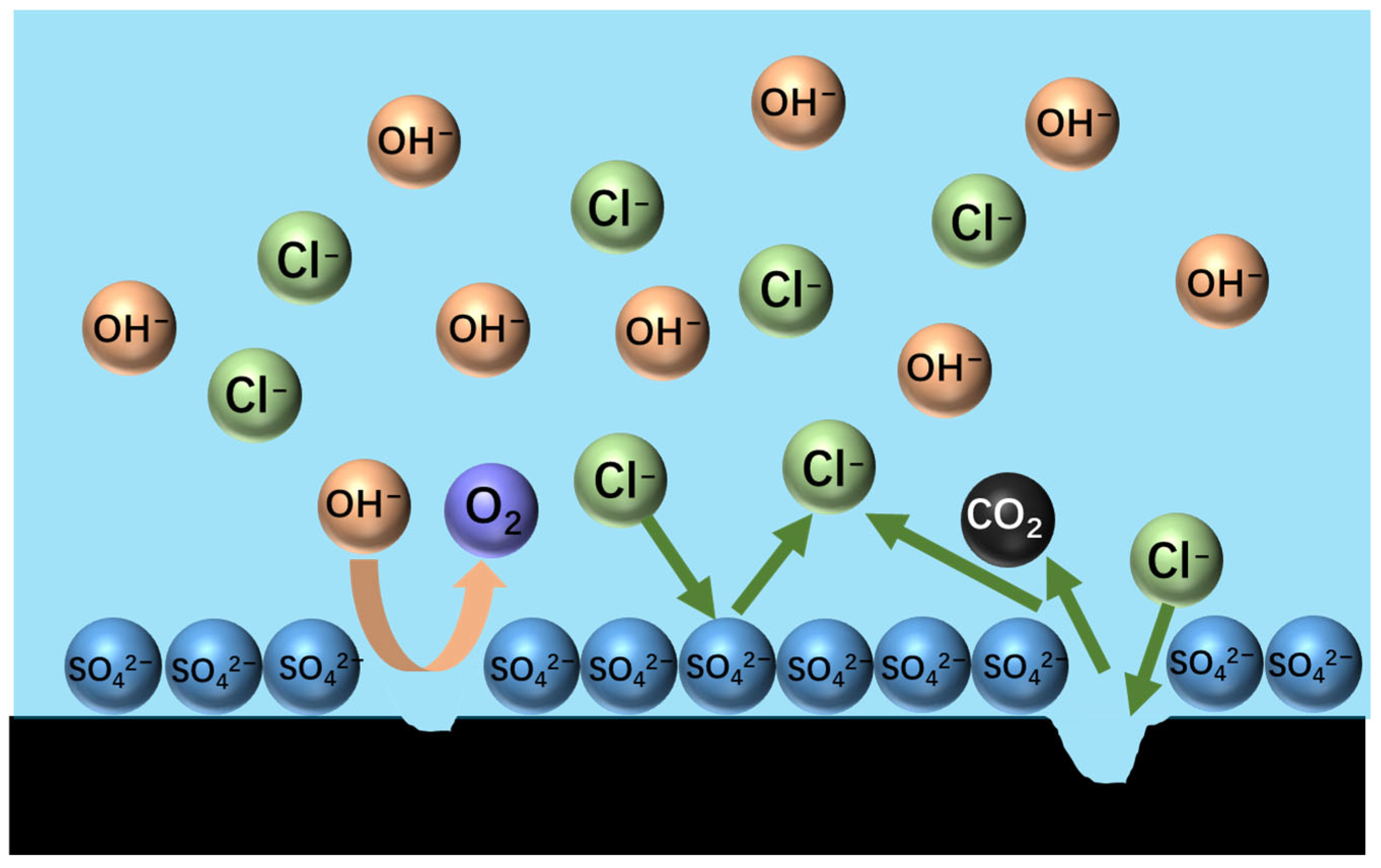

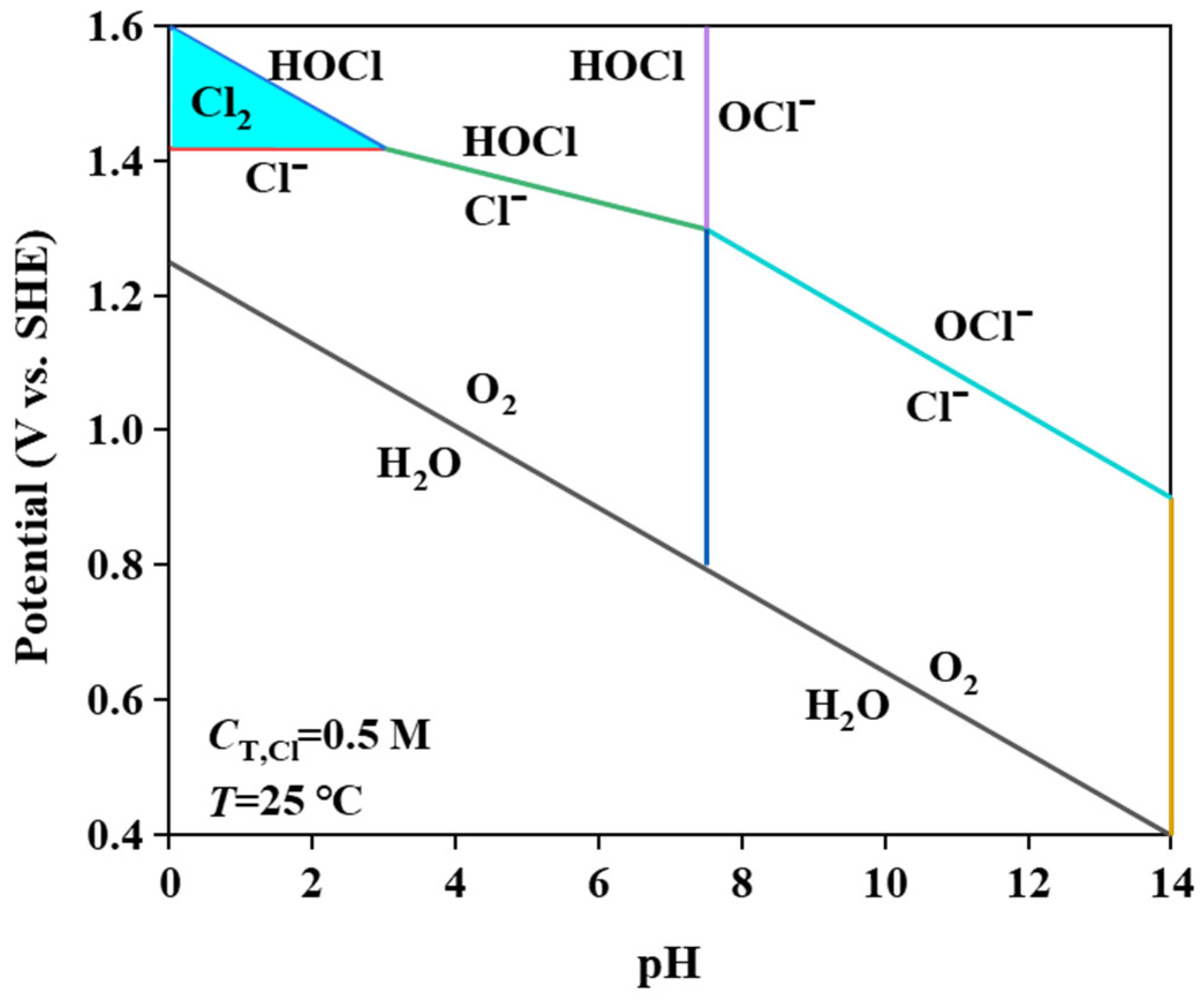
Disclaimer/Publisher’s Note: The statements, opinions and data contained in all publications are solely those of the individual author(s) and contributor(s) and not of MDPI and/or the editor(s). MDPI and/or the editor(s) disclaim responsibility for any injury to people or property resulting from any ideas, methods, instructions or products referred to in the content. |
© 2025 by the authors. Licensee MDPI, Basel, Switzerland. This article is an open access article distributed under the terms and conditions of the Creative Commons Attribution (CC BY) license (https://creativecommons.org/licenses/by/4.0/).
Share and Cite
Shang, K.; Li, Z.; Zhang, W.; Li, Y. A Study on Measures to Preserve Chlorine and Ammonia Oxygen Removal. Materials 2025, 18, 1347. https://doi.org/10.3390/ma18061347
Shang K, Li Z, Zhang W, Li Y. A Study on Measures to Preserve Chlorine and Ammonia Oxygen Removal. Materials. 2025; 18(6):1347. https://doi.org/10.3390/ma18061347
Chicago/Turabian StyleShang, Kecheng, Zhonglin Li, Weiguang Zhang, and Yibing Li. 2025. "A Study on Measures to Preserve Chlorine and Ammonia Oxygen Removal" Materials 18, no. 6: 1347. https://doi.org/10.3390/ma18061347
APA StyleShang, K., Li, Z., Zhang, W., & Li, Y. (2025). A Study on Measures to Preserve Chlorine and Ammonia Oxygen Removal. Materials, 18(6), 1347. https://doi.org/10.3390/ma18061347




